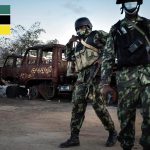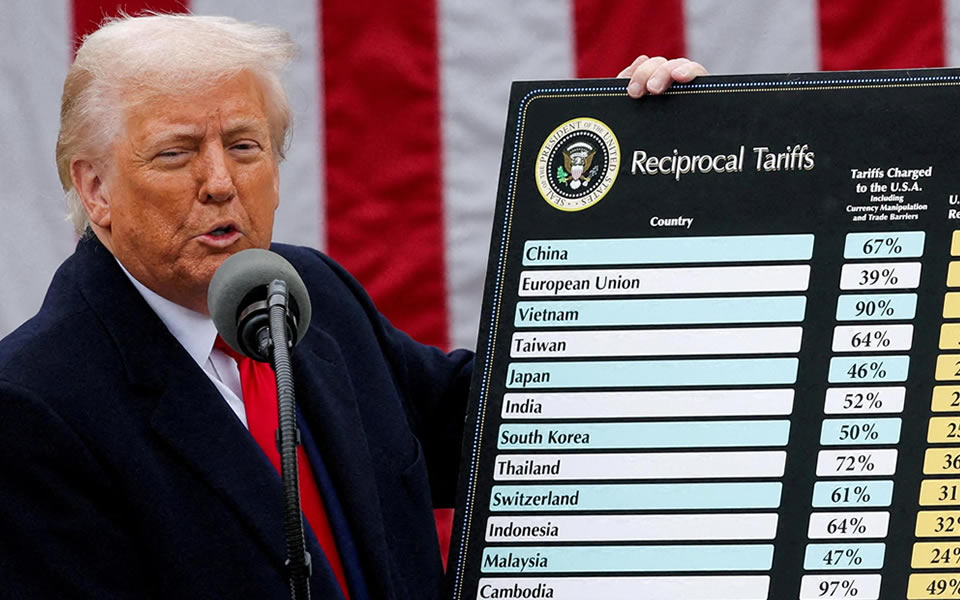
M23’s Advances & Security Dynamics in North Kivu
March 18, 2024
Extremism in Southern Africa: Focus on ISCAP-Mozambique
April 3, 2024EXTREMISM IN WEST AFRICA: FOCUS ON BOKO HARAM
Analysts: Khadijah Mustapha
Senior Editor: Magdalena Breyer
What You Should Know
- Operational Region: Boko Haram, which originated in northeastern Nigeria’s Borno State in the early 2000s, now mainly operates in West Africa’s Lake Chad basin region, focusing on the shared-border areas of Cameroon, Chad, Niger, and Nigeria. The group's activities spread across wider areas in 2023 compared to 2022, likely because of clashes with the more resourceful Islamic State West Africa Province (ISWAP) over previous territorial strongholds.
Goals: Boko Haram maintains an overarching goal to overthrow Nigeria's secular government and establish an Islamic state, driven by their rejection of Western education and influences. - Shift in Tactics in 2023: Boko Haram were involved in 6.72% less events than in 2022, with a more substantial 25.43% decrease in related casualties, likely reflecting the groups focus on the ongoing inter-jihadist conflict where their attacks have been less successful. Armed clashes reduced by 24.7%, indicating a reduced intensity of fighting with ISWAP and national security forces. Attacks and looting increased 18% and 44% respectively, likely a sign of the group's goals to re-establish dominance and replenish lost resources.
- Expansion in 2023: Since 2021, Boko Haram has suffered territorial losses to ISWAP and national security forces, especially in previous strongholds of the Sambisa Forest and neighbouring villages. The losses suffered by the group have led to fractured and diminished capacities, leading many fighters to surrender to security forces and others to disperse from the Lake Chad basin region. 2023 resultantly recorded an increased Boko Haram presence further south of the regions they typically operate, including the Tillaberi region of Niger and the middle belt of Nigeria.
- 2024 Forecast: Boko Haram's ongoing activities pose a continued threat in the Lake Chad basin region. Efforts to regroup will likely result in abduction, looting of civilian and government property, and sustained attacks on civilians, military targets and other militia groups. While continued clashes with opposing forces are very likely, reconciliation with ISWAP is possible, heightening the terrorist threat in the region. Although regional counterterrorism efforts pose a challenge, ongoing political instability will possibly create a vacuum Boko Haram can exploit to consolidate power as ISWAP in Borno will likely remain a primary opponent in 2024.
Introduction
Once the most prevalent Islamist-Jihadist group in the Lake Chad basin, Boko Haram faced continued opposition from IS-backed ISWAP in 2023, resulting in territorial losses in the fight for regional dominance. Fewer incidents compared to the previous year allude to a waning conflict, as fractures in the group structure led to a spread of militants to other parts of Cameroon, Niger, and Nigeria, outside of the Lake Chad region.
This assessment examines Boko Haram’s activities, tactics and regional impact in 2023, amid their struggle to maintain dominance in the region they once controlled. As Boko Haram seeks to re-establish itself as a credible actor against ISWAP, it is important to analyse their capabilities amid growing security threats and political instability in West Africa and the Sahel.

The Nigerian Armed Forces have struggled to contain Boko Haram's activities in North-Eastern Nigeria.
Geographical Areas of Activity in 2023

Boko Haram was active in the shared-border areas of Cameroon, Chad, Niger, and Nigeria in 2023. Despite a shifting focus towards Cameroon with a 51% increase in activity, Nigeria remained the most impacted with 77% of the total Boko Haram-affiliated casualties.
Since the death of their leader Abubakar Shekau in 2021, Boko Haram has faced territorial losses from continued clashes with security forces and ISWAP, who maintain a goal of absorbing the less resourceful group. ISWAP now controls the Sambisa Forest, which was once the Boko Haram headquarters, with Boko Haram facing continued bombardment in neighbouring strongholds like Gwoza.
In 2023, activities expanded to cover wider geographical areas beyond the Lake Chad basin region, likely driven by tense clashes with opposition groups and attacks from regional security forces. Boko Haram extended its attacks in Cameroon southward into Kassa and Banki, while decreasing its overall activities in Niger and Nigeria. Despite this reduction, the group’s presence progressed to Tillaberi in southern Niger and the middle belt of Nigeria, where it frequently encountered successful counter attacks from security forces and civilian task forces.
Timeline of Key Events
May 2021
ISWAP attacks Boko Haram's stronghold in the Sambisa forest of Borno, Nigeria. Boko Haram's leader, Abubakar Shekau, kills himself to avoid capture by ISWAP.December 2022
Boko Haram kills 33 wives of ISWAP fighters in retaliation for previous attacks.January 2023
Military forces in Niger state, Nigeria kill 2 Boko Haram commanders, Abu Ubaida and Mallam Yusuf Abba.
Boko Haram also kills 300 of their militants - and their wives - attempting to surrender to Nigerian military troops.March 2023
180 Boko Haram fighters and their families surrender to Nigerian troops in Yobe state, NigeriaJune 2023
Boko Haram eliminates Abou Hassana, a leader in the group, over plans of creating an independent splinter faction in Koltafirgi village, Borno, Nigeria.August 2023
ISWAP attacks Boko Haram fighters near Lake Chad and the group retaliates. Boko Haram suffers more casualties than ISWAP in the attack.October 2023
Bulama Bukar, a Boko Haram commander, surrenders to Nigerian military troops in Borno, Nigeria and hands over his weapons.
The recent timeline of events is indicative of the trend of militia defection and tense fighting with ISWAP.
Tactics and Techniques
According to the Armed Conflict Location & Event Data (ACLED), Boko Haram's activities have been as follows:
Armed Clash
Attacks
Looting
Abductions
Landmine/IED
Boko Haram's core tactics pre-2021 were typically characterised by indiscriminate violence, suicide bombs deployed in civilian-dense locations, abductions, destruction of private property, and looting of food and livestock. Following Abubakar Shekau's death in 2021 and fierce clashes with ISWAP in 2022, the group experienced territorial and membership declines, prompting a marginal shift in tactics in 2023. Although the distribution of tactics remained the same as 2022, incidents primarily involved carrying out low-casualty IED attacks, abductions, and prioritising looting, attacks, and armed clashes.
Armed Clashes
Armed clashes remained the most prominent tactic used by Boko Haram, despite a 24.7% decrease from 2022 figures, likely due to continued fighting with ISWAP, local militia, and clashes with security forces. The group used bicycles, hand-held guns, and gun trucks in these events, regularly suffering more casualties and weapon losses than their opponents.
Attacks
Boko Haram used attacks in 18% more instances than in 2022, mainly targeted towards ISWAP in the fight for territorial dominance. These attacks were more lethal through the use of more sophisticated technology, like hijacked drones.
Looting
Boko Haram resorted to looting food and livestock to replenish their resources and disrupt economic activities amid rising economic challenges in their operating areas. This tactic essentially imposed a form of taxation on trade and businesses, bolstering their control over local populations. Boko Haram looted 44% more in 2023, likely to compensate for losses incurred during clashes with ISWAP and other militias. The group also adopted ISWAP's taxation methods in some regions, likely aiming to make civilian populations more tolerant of their presence, despite encountering significant resistance from ISWAP.
Abductions
Abductions served as another source of revenue through ransom demands. Women and children were often the victims of this tactic, with some being used in suicide bombings and others forcefully married to militia members. The use of this tactic decreased by 6% in 2023.
Landmine/IEDs
Boko Haram used IEDs to destroy schools, mosques, churches, power transmission lines, and other critical infrastructure in attacks against opposing militias, military forces, and civilian populations. The use of this tactic decreased by 28%, likely due to a reduced focus on civilian and military targets where IEDs are the preferred tactic and increased physical attacks in clashes with ISWAP.

President Bola Tinubu has tasked his Military & National Security officials to prioritize the insurgency crisis amidst growing public concern for the rising level of insecurity in Nigeria
Opponents & Collaborators in 2023
Despite reduced influence and control in their operating areas, Boko Haram did not collaborate with any significant groups in 2023, likely because they faced opposition from numerous local actors. However, the group has been known to collaborate with smaller criminal gangs in instances of looting and abductions.
The group faced opposition from military, police, civilian and communal militia in the Lake Chad basin including:
- ISWAP factions - 63.12%
- Civilians in Cameroon - 46.22% of all incidents
- Military forces in Nigeria - 15.95% of all incidents
- Military forces in Cameroon - 15.43% of all incidents
- Civilians in Nigeria - 6.02% of all incidents
- Civilians in Niger - 2.79% of all incidents
- Multinational Joint Task Force (MNJTF) - 2.06% of all incidents
- Military forces in Niger - 1.69% of all incidents
Boko Haram's main opponent, ISWAP, split from the group in 2016 due to differences in tactics, favouring a more structured state-like approach and targeting state institutions over Boko Haram's indiscriminate violence against civilians. ISWAP has since gained and maintained regional dominance over Boko Haram, seeking to absorb it into its ranks with support from the Islamic State. ISWAP's extensive resources and Islamic State support make it a continued threat to Boko Haram, often attracting defectors from the smaller group. Boko Haram also recorded clashes with smaller communal militias like the Amchide militia in Cameroon and Mafa militia in Nigeria.
Military forces in Cameroon, Niger, Nigeria, and the Multinational Joint Task Force (MNJTF) constituted the second group of Boko Haram's opponents, aiming to impede the group's expansion as part of a broader effort to counter terrorist activities in the Lake Chad basin. Boko Haram engaged in conflicts with these forces primarily due to their belief that the existing non-Islamic government authorities lack legitimacy, establishing itself in areas with limited state presence.
Civilians in Cameroon, Niger, and Nigeria represented the third group of opponents, often falling victim to the group's indiscriminate tactics. Boko Haram did not exempt Muslim-majority communities from its attacks, despite the group’'s aim to establish an Islamic State, as it perceives anyone not aligned with its cause as supporting the Western agenda. While civilians in Cameroon made up 46.22% of all incidents involving Boko Haram, Nigerian civilians bore a higher proportion of casualties at 77%, likely a tool to put pressure on their main target, the Nigerian government.
Boko Haram's Impact in 2023
Although Boko Haram’s dominance and activities declined in 2023, their impacts unfolded across three distinct fronts: casualties, displacement, and overarching insecurity affecting the standard of living and means of livelihood. The group's activities were linked to 3,800 casualties, marking a 24.43% decrease in fatalities from 2022 but representing a 35% increase compared to 2021. The escalation in lethality of attacks was particularly evident in clashes between Boko Haram and regional militias, resulting in larger and more sophisticated assaults.
Boko Haram's activities displaced over 3.6 million people in the region, including approximately 1.8 million in Borno state, the epicentre of the crisis. The Lake Chad basin remains hazardous due to the ongoing intra-jihadist conflict, preventing numerous displaced individuals from returning to their homes. The instability in Nigeria's northeast alone led to 2.4 million people being uprooted from their communities since the start of the conflict in 2009, according to the UN Refugee Agency.
In addition to the direct casualties and resulting displacement, Boko Haram's activities caused severe insecurity, disrupting the daily lives and livelihoods of affected populations. The group's preference for abductions and looting contributed to economic losses and rendered travel unsafe, creating fear among people and hindering their ability to access markets. The shared border areas of Cameroon, Niger, and Nigeria resultantly felt the existing economic instability more acutely.
Forecast
Boko Haram's activities are likely to continue posing a significant threat in West Africa’s Lake Chad basin region, particularly as the group adapts its tactics to ensure survival against opponents. Boko Haram will possibly increase the lethality and sophistication of its methods by increasingly utilising technology such as drones, as is the trend with regional militia groups. This shift will possibly aim to compensate for the infighting caused by defection, and to maintain resilience and adaptability. The group's efforts to regroup and replenish its resources will possibly lead to an increase in attacks, abductions, and looting activities. Boko Haram's adoption of ISWAP tactics is possibly indicative of reconciliation potential between the two groups, despite clashes with opposing forces, including ISWAP factions, regional military forces, and local militias likely continuing. An end to the conflict between the Boko Haram and ISWAP will likely consolidate their resources and pose an increasing terrorist threat in the shared border region, very likely threatening counterinsurgency initiatives. The evolving dynamics within jihadist factions and ongoing instability in the region suggest that Boko Haram's impact will possibly persist, very likely exacerbating the humanitarian crisis and security challenges in affected areas.
While political and military strategies in Cameroon, Chad, and Nigeria will likely remain consistent, Niger’s evolving socio-political dynamics will likely influence its approach to counterterrorism and create a temporary vacuum, possibly leading to increased Boko Haram activity in the country. The political instability in the wider Sahel, heightened by the formation of the Alliance of Sahel States (AES) and their subsequent withdrawal from the Economic Community of West African States (ECOWAS), will possibly create uncertainties in Niger's participation in ECOWAS-centred multinational counterterrorism efforts. The recent departure of French and UN forces, coupled with AES’s relationship within the uncertain dynamics between Wagner Group and newly formed Africa Corps, will likely prompt changes in Niger's military strategies, likely creating temporary operational advantages for Boko Haram. While a power vacuum already exists, the tactics employed by Russian state and nonstate influences will likely challenge the group's activities and undermine their efforts to consolidate power, despite primary operations in Nigeria. Dominating ISWAP in Borno is likely to remain Boko Haram's primary focus in 2024.



